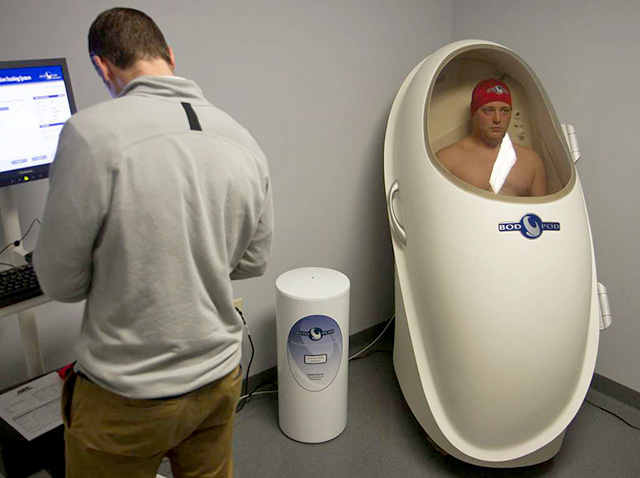Anthropometry involves measuring and analyzing the size, proportion and composition of the human body. Anthropometric testing in sports include measurements of athlete body length and girths, weight and composition. For athletes, it is important to be aware of the effects of changes to these factors on sporting performance, and to be able to measure them accurately.
 anthropometry measurement
anthropometry measurementBody Size in Sports
For most sports body size is an important factor in success, whether it is advantageous to be short, tall, heavy or light.
The advantages of specific body types can vary significantly depending on the demands of the sport. For instance, in basketball, taller individuals typically have an advantage due to their ability to reach higher, block shots, and score more easily near the basket. Conversely, in gymnastics, shorter and lighter body types with strong power-to-weight ratios excel, enabling athletes to perform complex maneuvers with agility and precision.
Similarly, sports like sumo wrestling favor heavier and bulkier body compositions, providing a greater mass to overpower opponents. Contrastingly, in endurance events such as long-distance running or cycling, a lighter and leaner physique is advantageous, allowing athletes to cover distances more efficiently due to reduced body weight and improved aerobic capacity.
Combat sports like judo or wrestling can benefit from a balanced body size where strength and agility play significant roles. Athletes in these sports often seek a combination of strength, flexibility, and optimal weight for their weight class to gain a competitive edge.
See Fitness Tests of Body Size & Structure
Body Composition in Sports
Body composition, encompassing body fat and muscle mass, can significantly affect sporting performance across various disciplines. In sports like sprinting, where explosive power and speed are pivotal, a lower body fat percentage coupled with well-developed muscle mass contributes to enhanced acceleration and faster sprint times. Athletes with higher muscle mass-to-body fat ratios often excel in power-based sports like weightlifting or shot put, where strength and explosiveness are paramount.
Conversely, in endurance sports such as marathon running or cycling, optimal body composition leans towards a lower overall body weight with well-maintained muscle mass. Reduced body fat translates to improved efficiency as excess weight can impede speed and endurance. Cyclists, for instance, strive for lean physiques to ascend mountains with less effort, while runners benefit from a lighter frame to cover long distances efficiently.
Additionally, sports that demand agility and precision, like gymnastics or diving, benefit from an ideal balance between muscle strength and body fat. A lean physique with adequate muscle strength aids gymnasts in executing intricate maneuvers, while divers require lean bodies for acrobatic movements with minimal splash.
We also have discussed anthropometric tests and measurements for a range of sports.
Related Pages
- About Anthropometry Tests
- A discussion about Body Size Testing
- A discussion about Body Composition Testing
- Anthropometry at the Olympic Games
- Body Composition and Fitness


 Current Events
Current Events